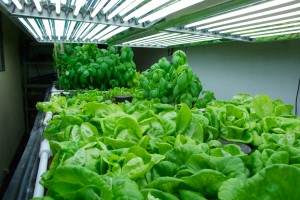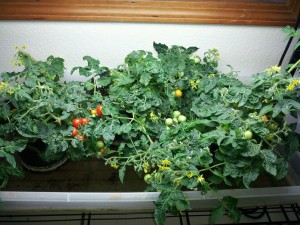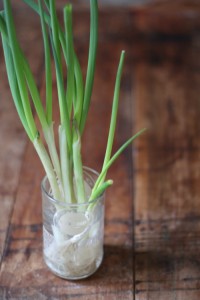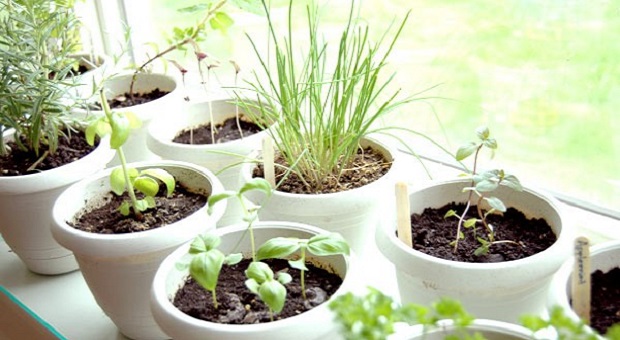If you truly want to be prepared for a real SHTF scenario, you will need to learn how to depend on others less and less for basic necessities such as food. Some of us still rely on companies to provide us with our food.
However, you could learn useful skills that would reduce this dependency such as growing your own food. Don’t worry about not having an open space for a garden. There are many plants which will thrive indoors.
Indoor gardening comes with several benefits. First, you don’t have to worry about where your next meal is coming from. Furthermore, it is more cost effective. Last but not least, locally grown vegetables taste better and are better for the environment.
The best part is that there are plenty of fruits and vegetables which will grow inside just as they would in a lush garden. All they need is a little space and access to the sun.
General Advice
Before going into the various plants you could grow indoors, here are a few general tips which apply to all cases.
First of all, some consideration should go to the pots you use. In order to thrive, indoor plants will require well-draining soil. This gives you two options. You could use pots that have holes at the bottom, this will allow the water to drain out. However, if you do this, you should also place a drainage container under the pot, otherwise the water will end up on your floor.
The other option would be to pile up stones at the bottom of the pot. This is done before adding the soil. In this case, the water will drain through the stones, but this is a good option mostly for bigger pots.
Once you have the pots sorted, you should focus on the soil. You will want rich and fertile soil for your plants to grow big. This also gives you two options: either buy the soil or make your own.
Either way, you should know that different plants will require different kinds of soil. There is a standard potting mix, though, which will provide good results with all plants.
Lastly, you will want to create the best environment for your plants. This would mean warm and sunny. However, that is not always possible. Maybe you live in an area with bad weather or maybe your windows do not have access to the sun.
In this situation, you can use grow lights. These can recreate the necessary light and temperature and make sure your fruits and vegetables have optimal conditions to grow.
What to Grow Indoor
If you do decide to use homegrown food as a main source of sustenance, it is important to diversify your plants for several reasons. For starters, you will not want to eat the same thing over and over again. It will get boring and can also  deplete you of valuable nutrients that the food is lacking.
deplete you of valuable nutrients that the food is lacking.
More importantly, though, crops will live and reproduce at different times of the year. If you have only one kind of plant, you are covered for one part of the year and left completely exposed for the rest.
In this regard, crops are often grouped into three categories: annuals, biennials and perennials. Annuals have the shortest lifespan. It only takes them one summer to grow and reproduce. Biennials will use the entire summer to grow, last over the winter and then use the next season to flower. Lastly, there are perennials which can last for many years. They will flower and produce seeds once a year when they are in season.
Speaking of seeds, it is important to know that you should not consume all of the plants you grow. In order to keep this process going, you will need to collect seeds from your best plants and use them for the next growing season.
1. Carrots
Carrots are a good choice for indoor gardening because they provide you with a lot of nutrients such as vitamins A, B6, C, potassium, niacin etc.
You will need to use a pot at least a foot and a half in length and width. The soil you use should be rich in humus for better results.
The seeds are placed an inch apart in rows six inches apart. Add a thin layer of soil on top and remember to water them frequently to keep the soil moist. It takes about two weeks for the seeds to germinate.
The carrots can be harvested once they reach about an inch or slightly less across the top.
If you want to collect the seeds, this will be a two-year process since carrots are biennials. At the end of the second season, the seeds should be mature. You can tell this if they are brown and have detached from the umbels. You will have to cut the seed stalks yourself. The seeds will not fall to the ground as they have little hooks to keep them attached to the plant.
2. Tomatoes
Tomatoes are good for you because they contain vitamins and a powerful antioxidant called lycopene.
If you are using smaller pots, you will need to limit one plant per pot. Standard potting mix will work great for tomatoes.
Plant the seeds about a quarter inch deep. Give them plenty of sun and water, but don’t keep the soil too soggy. Occasionally, you should rotate the pot so that all of the plant is getting sun.
The seeds should germinate in 5 to 10 days. After a few weeks, you can add an organic fertilizer to encourage growth.
The indoor tomatoes will not grow as large as outdoor ones, but they are still as juicy. They are ready to harvest when they are firm and red, but have a bit of give when you squeeze them.
Those you want for seeds you should let ripen a bit more. The seeds can then be removed, but dry them before storing.
3. Oranges
Oranges are some of the best fruits around due to their high antioxidant and vitamin C content.
In order to grow them inside, you will need to use dwarf orange trees. Even so, they will still need a lot of space combined with rich soil and plenty of sun. Try to use a large pot for these.
The roots can grow really long and can even begin to grow back on themselves. If this happens, the orange tree will need to be repotted in a larger pot.
As soon as the fruit turns orange in color, it is ready for harvesting. Leave the ones for seeds a bit longer, then collect the seeds, dry them and store them.
4. Scallions
 Scallions are a good choice for indoor gardening because they are very easy to plant.
Scallions are a good choice for indoor gardening because they are very easy to plant.
You don’t even need seeds. You can take a bunch of scallions wrapped together and place it in a glass with an inch of water.
Change the water daily and it will not be long until new green shoots appear. When this happens, place the scallions in a small pot.
When harvesting, be sure to leave an inch or two of the scallions in the dirt.
This article has been written by Bella Scotton for Survivopedia.











































































I would appreciate more info. Regarding Hydroponics, I have the basics in the structure of it,
But have not got more from your website, except the first plans to build the small basic unit.
This is all very interesting. Thanks.
Check out Backyard Liberty for a hydroponics growing setup. If I remember correctly it also show how to raise your own fish in the lower part of the set up. The fish waste feeds the plants and the plant roots and a few other things feed the fish. I have the video instructions for this method and it will take some work to set it up to work properly, but once it is working correctly, a bit of maintenance is all it takes.
A few tips from the voice of experience: although I’ve never grown citrus indoors, I have been quite successful keeping citrus varieties outdoors in 14″ pots year after year. Oranges and mandarins on dwarfing rootstock have done best in containers for me. They need well-drained soil that is kept moist but not soggy, and regular applications of a citrus fertilizer that contains the trace elements for proper growth and tasty fruit. Depending on the species, they also have certain heat requirements (hours over 80 degrees F per growing season) to produce sweet fruit. To keep them small and happy in containers, I pull them out of the pots every other year just before new growth starts in spring, and cut an inch off the root ball on the bottom and sides. Then I put ’em back in the same pots with new soil. Kind of like a large bonsai. My best producer is a Clementine mandarin I’ve had for 10 years. Although only 4 feet tall, it has cranked out 15-20 pounds of nice, juicy fruit a year for the past 5 years.
My only question about growing citrus indoors is, how does pollination happen? Would you need to do it by hand? Outdoors, bees show up by the zillions and do the job when the flowers appear.
In the video do you actually get blueprints for building the aquaponics system
Yes the basic video with the small containers, since I have tried to get more info on how to get a proper filter system before the fish water gets into the pump and then to distribute the flow over the rock-work.
I have built a fair set-up, a nice tank and a shelf setup with a slant to-wards the main tank. Next to get Trout stock (my interest) to keep.
Any more info. I can get, I will appreciate..Thanks.
go on youtube u will find a lot.
Thanks for the info.I shall check on your suggestion,
I would like to hear from someone that has had some experience with raising Trout in a
Tank enviornment,, that is cold water trout.